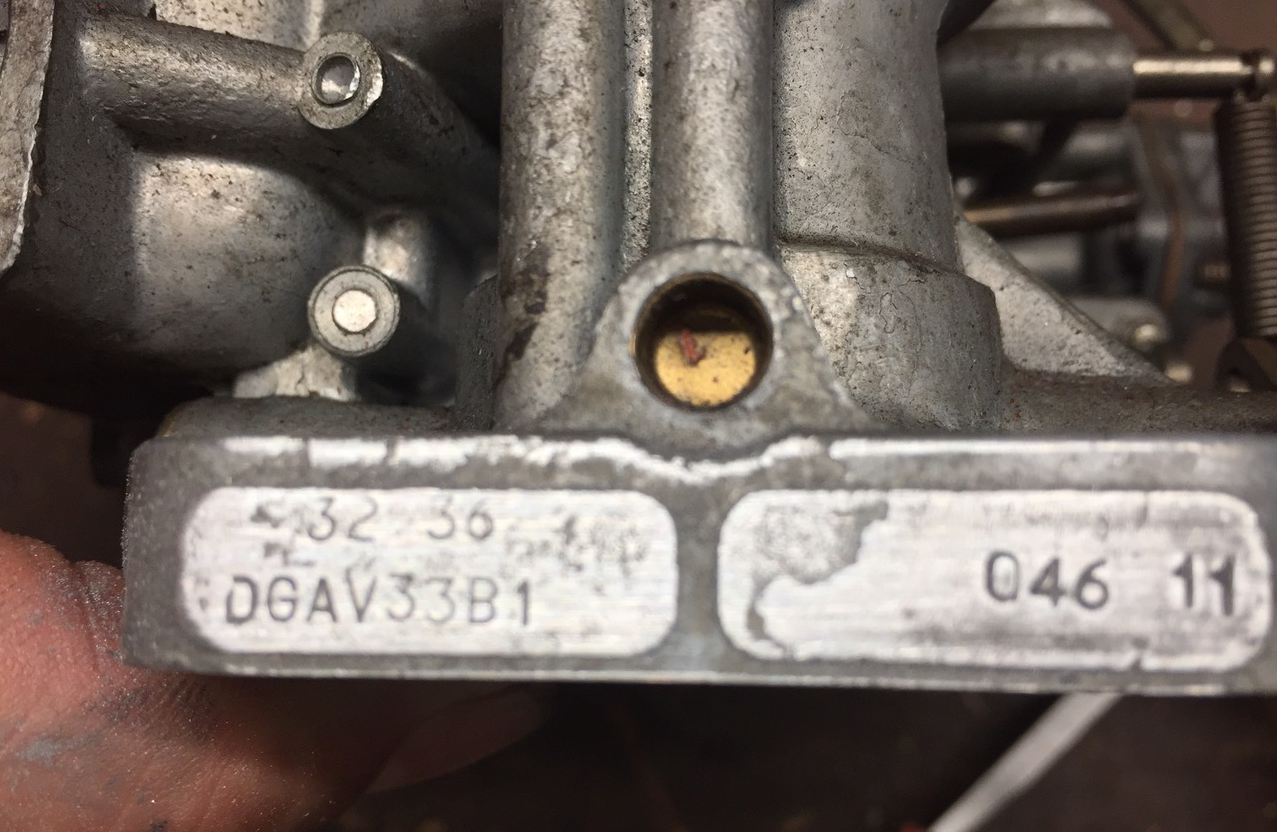Aloha,
I have a 1981 Wagoneer with a 4.2L engine and 4 speed manual that I was given a few months ago. I been ticking away a bunch of issues when I have a chance but have been stuck on getting the Jeep to run smoothly and not backfire.
The jeep is not factory original with the prior owner making various modifications. The Jeep has a weber carburetor and a bunch of deleted vacuum lines. I have read various forums to try and understand the best configuration for the 4.2L with a weber. I'm currently configured like this as suggested from Neuner from the Jeep CJ Forum. https://www.jeep-cj.com/forums/f2/we...ed-help-22159/


This is what I'm observing, when I have the jeep running with the port vacuum plug and the vacuum advance open to atm pressure, the jeep runs fine at idle, but backfires when you have load or give it gas without load. If add the vacuum advance line from the port vacuum on the carburetor, I see the vacuum advance lever on the distributer oscillate back and forth and the engine runs like crap. I placed a vacuum gauge on the line and I see the vacuum pressure oscillate from the carburetor. I'm not sure what this means...
The timing has been set during all of these experiments at 8 to 10 degree retarded at an unknown rpm (i don't have a RPM gauge). I have backed off the idle screw to a point where it is almost stalling and then turned back a little bit until it sounds better as my start point to set the timing. I'm new to all this, and I'm wondering what is the best way to measure rpm when you don't have a tach in the jeep?
Finally, I feel I'm at a crossroads with this jeep. If it was you, would it make sense to spend the money and install a fuel injection system or to rebuild or repurchase the weber carburetor? The jeep was free, but I have a lot of body work ahead of me and other investments to make it into a daily driver. I wondering if there is a cheap way to get the jeep reliable for cheap by approaching things by taking it to the bare minimum to make things run. Since it is 1981, I believe it does not have the more complicated emission control systems. So what would be the bare minimum set up just to get it reliable without backfiring under load?
All the help you can provide will be greatly appreciated!
Best,
I have a 1981 Wagoneer with a 4.2L engine and 4 speed manual that I was given a few months ago. I been ticking away a bunch of issues when I have a chance but have been stuck on getting the Jeep to run smoothly and not backfire.
The jeep is not factory original with the prior owner making various modifications. The Jeep has a weber carburetor and a bunch of deleted vacuum lines. I have read various forums to try and understand the best configuration for the 4.2L with a weber. I'm currently configured like this as suggested from Neuner from the Jeep CJ Forum. https://www.jeep-cj.com/forums/f2/we...ed-help-22159/


This is what I'm observing, when I have the jeep running with the port vacuum plug and the vacuum advance open to atm pressure, the jeep runs fine at idle, but backfires when you have load or give it gas without load. If add the vacuum advance line from the port vacuum on the carburetor, I see the vacuum advance lever on the distributer oscillate back and forth and the engine runs like crap. I placed a vacuum gauge on the line and I see the vacuum pressure oscillate from the carburetor. I'm not sure what this means...
The timing has been set during all of these experiments at 8 to 10 degree retarded at an unknown rpm (i don't have a RPM gauge). I have backed off the idle screw to a point where it is almost stalling and then turned back a little bit until it sounds better as my start point to set the timing. I'm new to all this, and I'm wondering what is the best way to measure rpm when you don't have a tach in the jeep?
Finally, I feel I'm at a crossroads with this jeep. If it was you, would it make sense to spend the money and install a fuel injection system or to rebuild or repurchase the weber carburetor? The jeep was free, but I have a lot of body work ahead of me and other investments to make it into a daily driver. I wondering if there is a cheap way to get the jeep reliable for cheap by approaching things by taking it to the bare minimum to make things run. Since it is 1981, I believe it does not have the more complicated emission control systems. So what would be the bare minimum set up just to get it reliable without backfiring under load?
All the help you can provide will be greatly appreciated!
Best,









Comment